The Crucial P1 1TB SSD Review: The Other Consumer QLC SSD
by Billy Tallis on November 8, 2018 9:00 AM ESTAnandTech Storage Bench - Light
Our Light storage test has relatively more sequential accesses and lower queue depths than The Destroyer or the Heavy test, and it's by far the shortest test overall. It's based largely on applications that aren't highly dependent on storage performance, so this is a test more of application launch times and file load times. This test can be seen as the sum of all the little delays in daily usage, but with the idle times trimmed to 25ms it takes less than half an hour to run. Details of the Light test can be found here. As with the ATSB Heavy test, this test is run with the drive both freshly erased and empty, and after filling the drive with sequential writes.
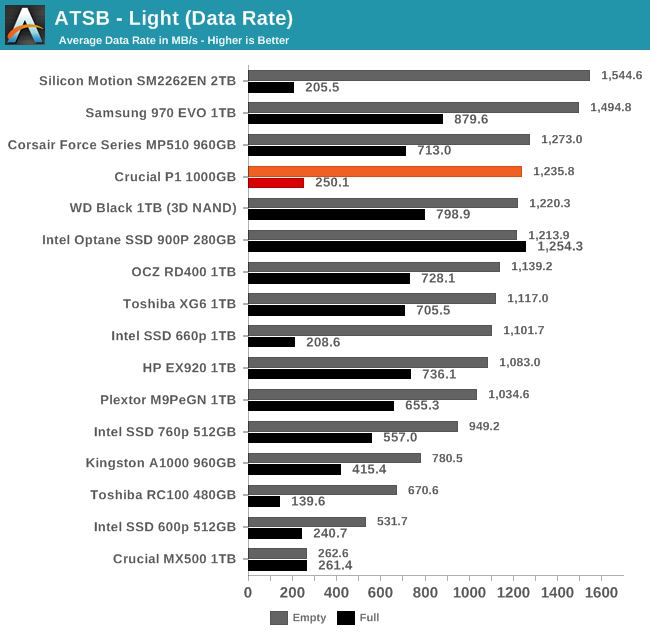
As with the Heavy test, the Crucial P1 handles the Light test as well as most high-end drives when the test is run on an empty drive with plenty of free space in the SLC cache. When the test is run on a full drive, the P1's average data rate drops to just below that of the Crucial MX500 SATA SSD.
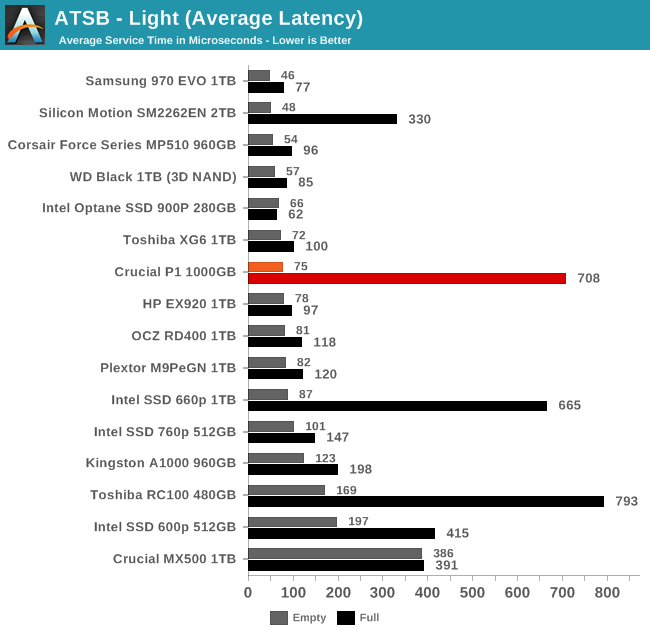
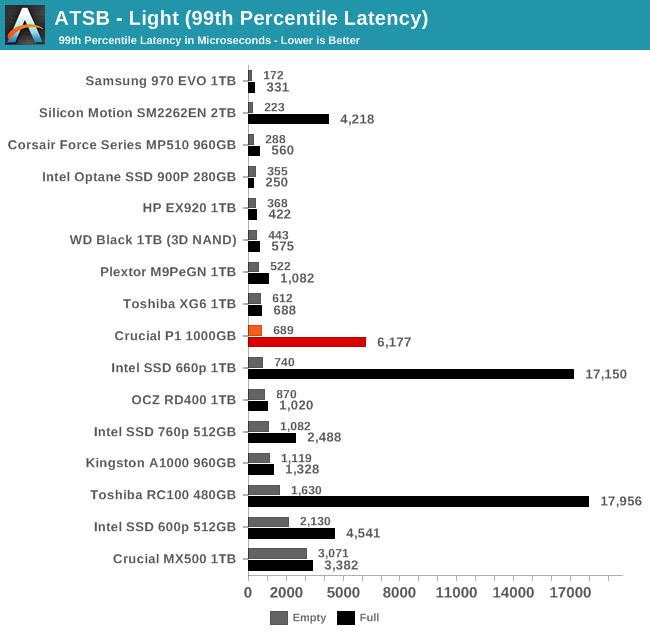
When the Light test is run on an empty Crucial P1, the average and 99th percentile latency scores are comparable to high-end NVMe SSDs because the test is operating entirely within the SLC cache. When that cache is shrunk by completely filling the drive, both latency scores are an order of magnitude worse. However, the 99th percentile latency is much better than what we saw from the Intel 660p when full.
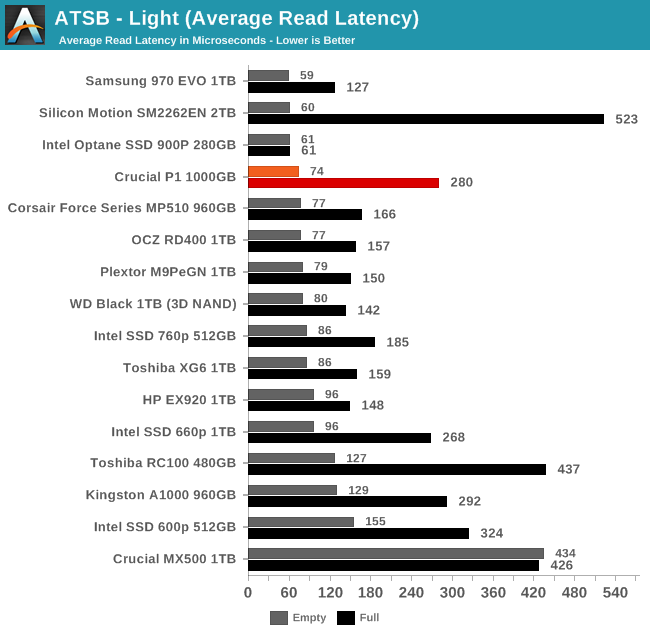
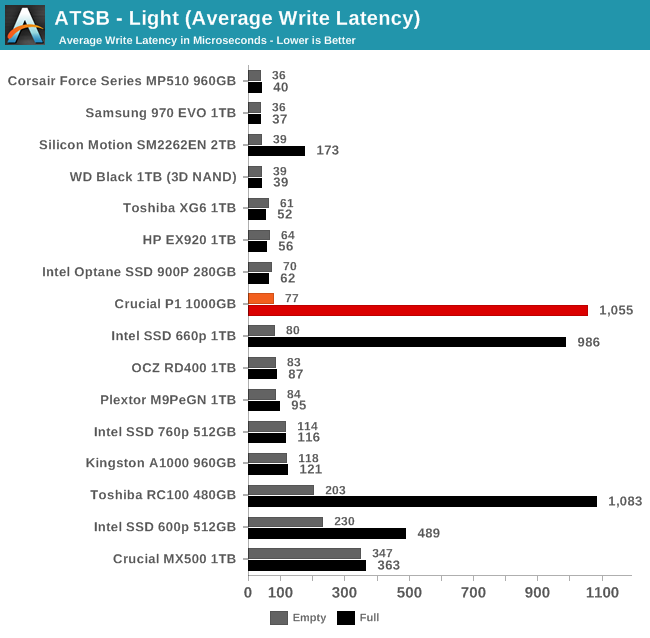
The average read latency of the Crucial P1 stays reasonably below that of SATA SSDs even when the test is run on a full drive, but the average write latency ends up several times higher than the MX500 SATA drive. The Intel 660p and DRAMless Toshiba RC100 have similar average write latency when full.
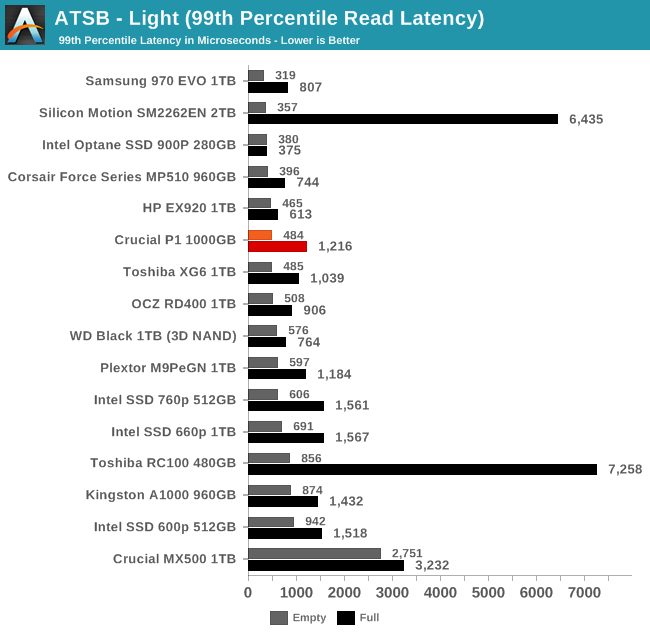
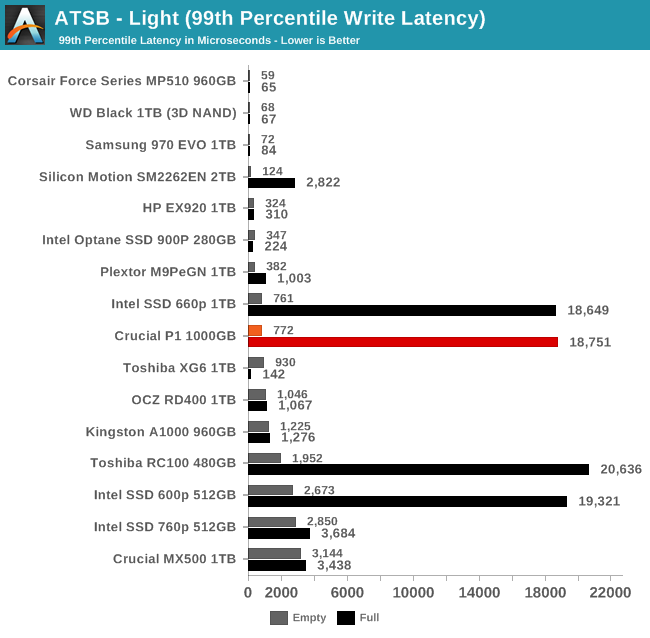
The 99th percentile read and write latency scores tell a similar story to the average latencies, but the weaknesses of the Crucial P1 stand out more clearly. Even with a full drive, read latency on the Light test isn't a problem, but write latency can climb to tens of milliseconds.
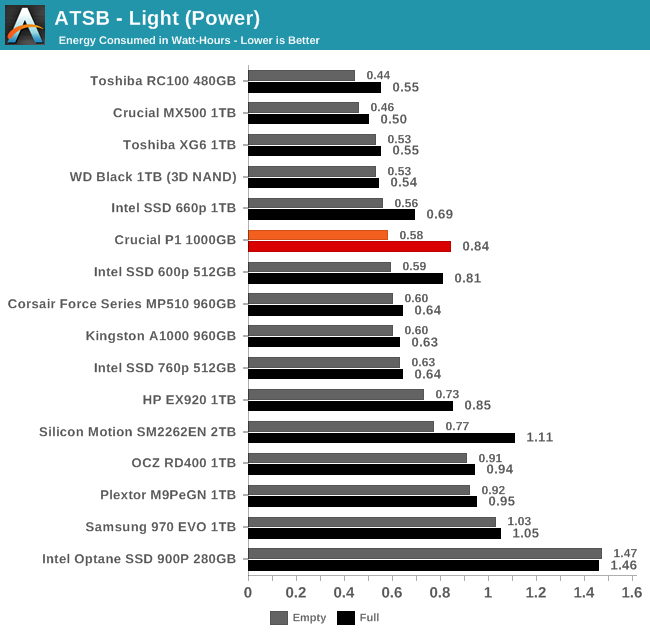
Energy usage by the Crucial P1 is reasonably low (by NVMe standards) when the Light test is run on an empty drive. When the test is run on a full drive, the P1 uses substantially more energy than the Intel 660p and instead shows comparable efficiency to most high-performance NVMe SSD.










66 Comments
View All Comments
Marlin1975 - Thursday, November 8, 2018 - link
" The company's first attempt at an NVMe drive was ready to hit the market but was canceled when it became clear that it would not have been competitive."Looking at this one maybe it should follow the same fate. Or the price should be much lower.
StrangerGuy - Thursday, November 8, 2018 - link
The MSRP for the 1TB is a completely non starter when the excellent EX920 1TB already hit $170, but if the actual price drops to $120 it's definitely appealing especially for a low write count usage like a Steam install drive.FullmetalTitan - Thursday, November 8, 2018 - link
The 970 EVO 1TB NVMe was just on sale for $228 on most retail sites in the US. At the same cost/GB and significantly better performance, it isn't even a question what to buy currently.menting - Thursday, November 8, 2018 - link
comparing sale price vs retail price is pretty meaningless.Billy Tallis - Thursday, November 8, 2018 - link
Given how flash memory prices have been dropping, today's sale price is next month's everyday retail price.DigitalFreak - Friday, November 9, 2018 - link
Just saw the 970 EVO 1TB is $219 at Microcenter. Unless it gets a $50+ price cut immediately, the P1 is DOA.tokyojerry - Friday, April 19, 2019 - link
Currently $128 at Amazon. As of 4/19/2019 3:14:42 PM0ldman79 - Monday, November 12, 2018 - link
I just paid $139 for a WD Blue 1TB 3D m.2 a couple of days ago. Haven't even beaten on it thoroughly.In quick testing (video encoding) during the decompress it will sustain 300MBps for a while, not sure if I'm hitting a drive limit, IO limit or CPU limit shortly there after. The program starts a few other processes, so I'm thinking CPU.
III-V - Thursday, November 8, 2018 - link
They are supposedly having yield issues. If they resolve those, there is plenty of room for cost to come down.Oxford Guy - Thursday, November 8, 2018 - link
Look at what happens with DRAM every time. DDR2 comes out and DDR1 becomes more expensive. Rinse repeat.QLC may lead to higher TLC prices, if TLC volume goes down and/or gets positioned as a more premium product as manufacturers try to sell us QLC.